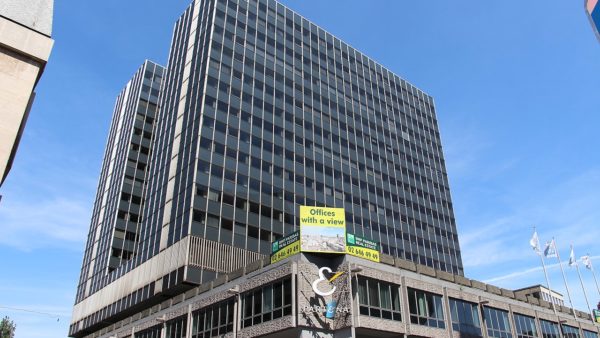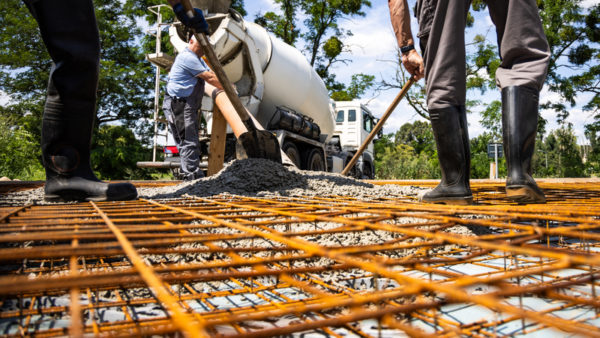Doha’s success in winning the 2019 World Athletics Championship was unexpected – the US city of Eugene, in Oregon, was favourite. What was more predictable was that the victory would be the signal for another chorus of calls for Qatar to do more to safeguard the welfare of its guest workers, including the army of construction labourers who are engaged in one of the biggest exercises in nation building the world has ever seen: it was announced on 16 November that spending on infrastructure, which grew 16% last year, would increase by double digits next. Altogether, $182bn is to be spent before the end of the decade.Â
The announcement of the International Amateur Athletics Federation’s decision coincided with two other events. One was a statement by Qatar’s minister for labour and social affairs that the kafala system would be replaced by more conventional employment contracts early next year. This was not a new announcement, however, but a restatement of plans made public in May to allow workers more freedom to contract, freedom to leave Qatar, more secure payment systems and minimum accommodation standards. Â
Qatar’s slavery problem
The other was the release of a report by the Walk Free Foundation into slavery in the modern world. It found that Qatar had the fourth highest proportion of enslaved people in its workforce, after Mauritania, Uzbekistan and Haiti. Walk Free said that “on a conservative estimate” this amounted to 1.4%, or 29,400.
Proceeds from slavery are something like $150bn a year– The International Labour Organisation
The report ranks governments from A to D on the basis of their policy towards slavery. Qatar was put in the CC group, indicating only basic victim support services provided by NGOs rather than the state, a limited criminal justice framework and few protections for those vulnerable to enslavement. There may be evidence that some policies and practices facilitate slavery. Â
The report notes that “migrant workers, predominately from India, Sri Lanka, Nepal, Pakistan, Bangladesh and the Philippines, are subjected to a range of exploitative practices that may amount to forced labour and domestic servitude – namely, extortionate recruitment fees, illegal confiscation of passports, withholding of salaries, excessive working hours, hazardous workplaces, unhygienic living conditions, and physical, psychological and sexual abuse by employers”.Â
The universal mechanism for remedying these abuses is the legal system, however workers who start a court case against their employer in Qatar have to stay in country for the duration of the hearing, and because the employer they are suing is unlikely to agree to transfer their kafala, or sponsorship, the worker will probably not have an income during the trial.Â
The report notes that about 90% of migrant workers have their passports withheld, that 56% do not have the health cards necessary to access the hospital system, 21% are rarely or never paid on time and 20% receive a lower salary than that promised. Â
It also notes that there have been positive developments, such as the requirement that companies set up bank accounts for workers and pay wages electronically. There are also bans on mid-day outdoor work, which are enforced with prosecution and fines. However, the report added that these need to be reinforced with collective action from employers, police, and the judiciary.Â
It also says that companies working in the country should do more to monitor their subcontractors’ behaviour, and in particular “investigate the recruitment practices of suppliers and sub-suppliers, and work with suppliers to compensate staff that have paid excessive recruitment fees”.Â
Construction’s slavery problem
The International Labour Organisation estimates that the proceeds from slavery are something like $150bn a year. The main consumers of this slave labour are what might be called the traditional slave industries of agriculture, “entertainment” and domestic service. In some cases these have a modern spin: whereas Uzbekistan forces its government workers to help pick cotton, Ireland and the UK hosts Vietnamese slaves who pick cannabis. Â
The construction industry around the world is another of the principal consumers of slave labour, both on site and in the materials production industry, which largely means brick making. The Walk Free report has more than 30 references to slave labour around the world. Â
- The greatest number of slaves within construction are in India, Pakistan and Bangladesh. In this case, individuals, and often entire families, are enslaved through bonded labour in construction and brick making. Approximately 1.2 million people work in about 8,000 brick kilns in Bangladesh, many in situations of bonded labour. In 2011, men, women and children were found held in chains having been forced to work in brick kilns.
- According to the Building and Wood Workers International, many of the 31 million women working in the construction sector are employed in the brick kiln industry. In addition to low wages, women workers are prone to exploitation. This was evident by a recent case of 17 internal migrant workers who were bonded and denied wages for nearly four months at the SBC brick kiln in Matiyari, District Araria, Bhiar State in India. They were rescued by police. Officials reported that these women were also sexually abused. The workers were brought the particular brick kiln by a middleman.
- Europe has the lowest incidence of slavery, but it still occurs. The sex industry accounts for 70%, although construction, agriculture and food processing exploit unfree labour. The report says cases of debt bondage and forced labour of nationals from Eastern Europe in Western Europe continues in the agricultural, construction and food processing sectors, however, Turkey and Poland are the countries with the most slaves.
- A report from the US State Department, Trafficking in Persons 2014, says Chinese, South-east Asian, Namibian, and possibly Congolese migrants are subjected to forced labour in Angola’s construction industry. It says: “Conditions include the withholding of passports, threats of violence, denial of food, and confinement. Chinese workers are brought to Angola by Chinese companies that have large construction or mining contracts; the companies do not disclose the terms and conditions of the work at the time of their recruitment.”
- The State Department also alleges that thousands of workers from Central Asia migrate to Russia hoping to earn money to improve the lives of their families, but often end up working long hours at construction sites for little or sometimes even no pay at all. This was also highlighted in a Human Rights Watch report about the use of forced labour in the preparations for the Winter Olympics in Sochi. Russia’s slavery and trafficking problem reflects the strength of organised crime in the country.






